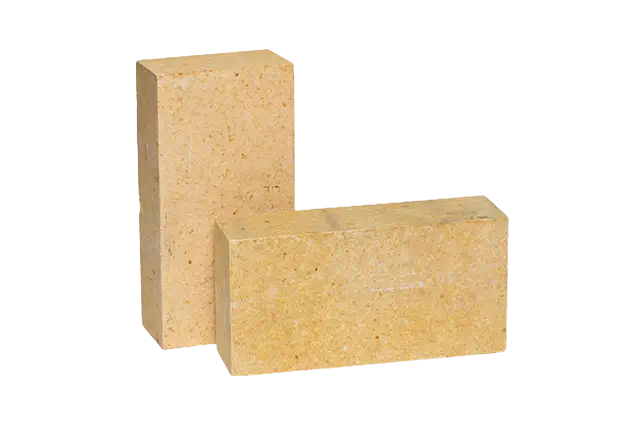
1.High Refractoriness: Can withstand temperatures above 1700°C, suitable for high-temperature environments.
2.Strong Corrosion Resistance: Excellent resistance to acidic and neutral corrosion.
3.High Mechanical Strength: Can withstand high pressure and impact, maintaining structural stability.
4.Good Thermal Stability: Can endure rapid temperature changes without cracking.
5.Low Thermal Conductivity: Effectively retains heat, reducing energy loss and saving energy.
Whatsapp:
8615038278221E-mail:
info@rsrefractories.com
High-alumina refractory bricks are a type of refractory material. They use high-alumina bauxite clinker as the main raw material, soft clay and waste pulp paper liquid as the binding agent. The mud is made of multi-level particle proportions, which are formed by high pressure and dried. , fired at high temperature. The main component of this refractory brick is Al2O3. If the Al2O3 content is higher than 90%, it is called corundum brick. Due to different resources, national standards are not completely consistent. For example, European countries stipulate that the lower limit of Al2O3 content for high-aluminum refractory materials is 42%. In China, high alumina bricks are usually divided into three grades according to the Al2O3 content: Grade I - Al2O3 content >75%; Grade II - Al2O3 content is 60-75%; Grade III - Al2O3 content is 48-60%. The production process of high alumina bricks and multi-clinker clay bricks is similar. The difference is that the proportion of clinker in the ingredients is higher, which can be as high as 90-95%. The clinker needs to be sorted and screened to remove iron before crushing. The firing temperature Higher, for example, when high alumina refractory bricks such as I and II are fired in a tunnel kiln, the temperature is generally 1500 to 1600°C.
Characteristics of high alumina refractory bricks:
(1) Fire resistance. The refractory resistance of high alumina bricks is higher than that of clay bricks and semi-silica bricks, reaching 1750-1790 degrees, and it is an advanced refractory material.
(2) Load softening temperature. Because high-aluminum products have high Al?O?, low impurities, and less fusible glass, the load-softening temperature is higher than that of clay bricks. The load-softening temperature of high-aluminum products is generally above 1420-1550 degrees. However, because the mullite crystal does not form a network structure, the load softening temperature is still not as high as that of silica brick.
(3) Slag resistance. High alumina refractory bricks contain more Al?O?, which is close to neutral refractory materials and can resist the erosion of acidic slag and alkaline slag. Because it contains SiO?, its ability to resist alkaline slag is weaker than that of acidic slag.
(4) Chemical resistance. High-aluminum refractory products are very resistant to corrosion and oxidation and reduction reactions of acidic or alkaline slag and molten metal, and are enhanced as the Al?O? content increases and the harmful impurity content decreases.
| Customizable High alumina refractory bricks | ||||
| Item | Grade I High Alumina Brick |
Grade II High Alumina Brick |
Grade III High Alumina Brick |
Special High Alumina Brick |
| LZ-75 | LZ-65 | LZ-55 | LZ-80 | |
| AI2O3 | 75 | 65 | 55 | 85 |
| Fe2O3 | 2.5 | 2.5 | 2.6 | 2.0 |
| Volume density g/cm³ |
2.5 | 2.4 | 2.3 | 2.6 |
| Normal temperature compressive strength Mpa> |
70 | 60 | 50 | 80 |
| Load softening temperature℃ |
1510 | 1460 | 1420 | 1550 |
| Refractoriness degree℃> |
1790 | 1770 | 1770 | 1790 |
| Apparent porosity %< |
22 | 23 | 24 | 21 |
| Line change rate % |
-0.3 | -0.4 | -0.4 | -0.2 |
Mainly used for lining blast furnaces, hot blast furnaces, electric furnace roofs, blast furnaces, reverberatory furnaces, and rotary kilns. In addition, high alumina bricks are also widely used as open-hearth regenerative checker bricks, plugs for pouring systems, nozzle bricks, etc.
If you need our products please write down any questions, we will reply as soon as possible.